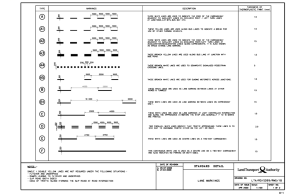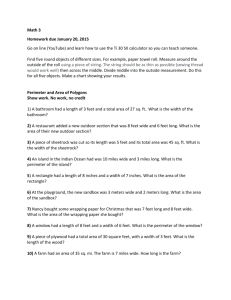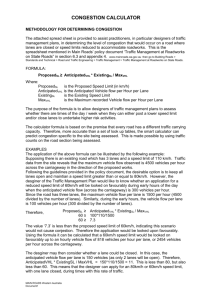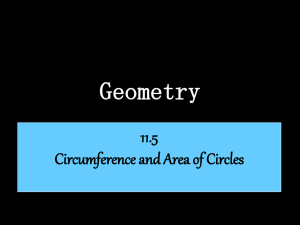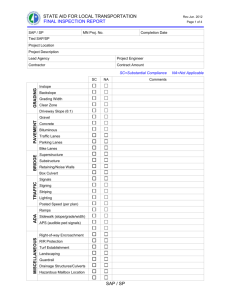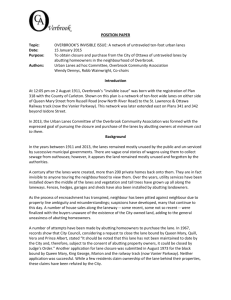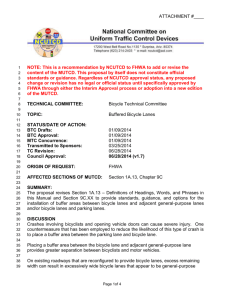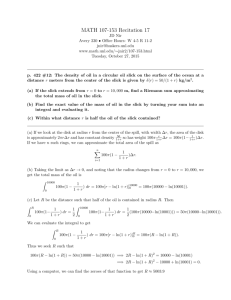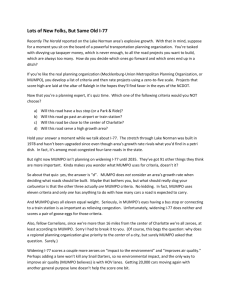Get it - Indiana University
advertisement
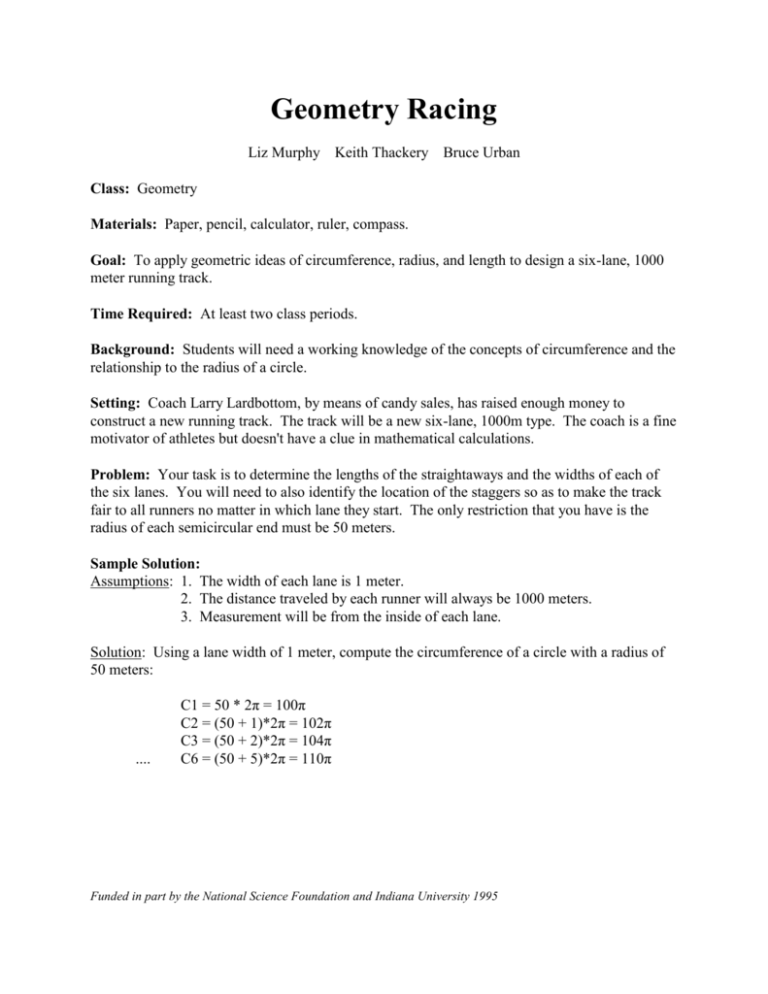
Geometry Racing Liz Murphy Keith Thackery Bruce Urban Class: Geometry Materials: Paper, pencil, calculator, ruler, compass. Goal: To apply geometric ideas of circumference, radius, and length to design a six-lane, 1000 meter running track. Time Required: At least two class periods. Background: Students will need a working knowledge of the concepts of circumference and the relationship to the radius of a circle. Setting: Coach Larry Lardbottom, by means of candy sales, has raised enough money to construct a new running track. The track will be a new six-lane, 1000m type. The coach is a fine motivator of athletes but doesn't have a clue in mathematical calculations. Problem: Your task is to determine the lengths of the straightaways and the widths of each of the six lanes. You will need to also identify the location of the staggers so as to make the track fair to all runners no matter in which lane they start. The only restriction that you have is the radius of each semicircular end must be 50 meters. Sample Solution: Assumptions: 1. The width of each lane is 1 meter. 2. The distance traveled by each runner will always be 1000 meters. 3. Measurement will be from the inside of each lane. Solution: Using a lane width of 1 meter, compute the circumference of a circle with a radius of 50 meters: .... C1 = 50 * 2π = 100π C2 = (50 + 1)*2π = 102π C3 = (50 + 2)*2π = 104π C6 = (50 + 5)*2π = 110π Funded in part by the National Science Foundation and Indiana University 1995 Next, compute total distance (S = straightaway distance): ..... T1 = 2*S + 100π T2 = 2*S + 102π T6 = 2*S + 110π Since each runner must travel 1000 meters, let G = length of stagger. T1 + G = T2 2S + 100π + G = 2S + 102π G = 2π Evaluation: Assumptions 20 points Calculations 20 points Report 10 points Total 50 points Extensions: You may want to change the following to make the problem more challenging: 1) 2) 3) 4) 5) The number of lanes. The width of the lanes. The diameter of the semicircular ends. The shape of the track. Calculate the distance of each lane. Teacher Notes: The following questions may or may not be given to assist the students understanding of this problem: 1) 2) 3) Is there a relationship between the radius and the positioning of the staggers? How does the width of the lane affect the positioning of the staggers? How does the length of each straightaway affect positioning of the staggers? Funded in part by the National Science Foundation and Indiana University 1995


